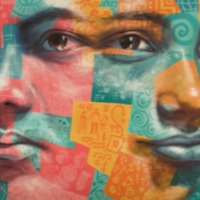
S.
There are an estimated 20,000 people living in conditions of modern slavery in Albania (GSI 2018). An estimated 10% of girls in Albania are married before their eighteenth birthday, with child marriage most common among the Roma ethnic group and in poor, isolated and rural areas. Child marriage is driven by gender inequality and while country has committed to eliminate child, early and forced marriage by 2030 in line with target 5.3 of the UN Sustainable development goals, no progress has been reported thus far. Human traffickers also exploit domestic and foreign victims in Albania, and traffickers exploit victims from Albania abroad. Traffickers exploit Albanian women and children in sex trafficking and forced labor within the country, especially during tourist season. Traffickers use false promises such as marriage or employment offers to force victims into sex trafficking. Traffickers exploit Albanian victims in sex trafficking in countries across Europe, particularly Kosovo, Greece, Italy, Belgium, Germany, Switzerland, North Macedonia, Norway, the Netherlands, and the UK. Albanian migrants who seek employment in Western Europe face forced labor and forced criminality, particularly in the UK. S was born in Albania to a poor family who forced her to marry someone living in Greece at the age of 14. S moved to Greece with her husband illegally, subjected to emotional and physical abuse daily. After a year, S escaped her marriage and was deported back to Albania, however after giving birth to her daughter, Sara, S’s father forced her into another marriage with a 60-year-old man. S escaped this second forced marriage with the help of her father’s friend she had known since she was ten years old. This man, however, attempted to traffik S into prostitution in Italy. She was caught by police on a boat and referred to a safe place back in Albania.
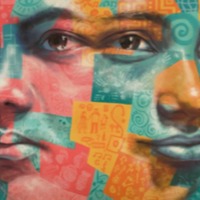
P.
There are an estimated 23,000 people in modern slavery in Belgium (GSI 2018). People are subjected to sex and labour trafficking in the country, with foreign-born people coming primarily from Asia, Eastern Europe, North and Sub-Saharan Africa. Labour traffickers exploit men in restaurants, bars, sweatshops, horticulture, fruit farms, construction, cleaning businesses and retail shops, they also exploit foreign workers in domestic servitude. Sex trafficker exploit Belgian girls, some of whom recruited by local pimps, and foreign children, including Roma. Forced begging within the Romani community in Belgium also occurs, while asylum seekers often have their applications for legal status denied, increasing their vulnerability to trafficking. P was in high school when she fell in love with a boy who convinced her to go to Belgium with him. Upon arrival, he became abusive and trafficked P for six months across the country. P was finally able to escape and find shelter with people who helped her return to Albania.
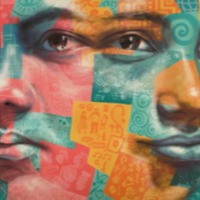
M.
There are an estimated 23,000 people in modern slavery in Belgium (GSI 2018). People are subjected to sex and labour trafficking in the country, with foreign-born people coming primarily from Asia, Eastern Europe, North and Sub-Saharan Africa. Labour traffickers exploit men in restaurants, bars, sweatshops, horticulture, fruit farms, construction, cleaning businesses and retail shops, they also exploit foreign workers in domestic servitude. Sex trafficker exploit Belgian girls, some of whom recruited by local pimps, and foreign children, including Roma. Forced begging within the Romani community in Belgium also occurs, while asylum seekers often have their applications for legal status denied, increasing their vulnerability to trafficking. M was walking to a friend’s house when she was abducted and taken to a house in Vlore where other girls were being kept. After being held there for two weeks, M was smuggled by boat to Italy and then on to Paris by train and then on again to Brussels. Upon arrival, M was forced into prostitution, subjected to physical and sexual abuse daily. One night, M was rescued by police who referred her to a shelter who are assisting M in reuniting with her family.
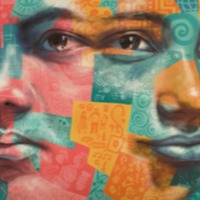
C.
There are an estimated 145,000 people living in conditions of modern slavery in Italy (GSI 2018). Italy is a destination, transit, and source country for women, children, and men subjected to sex trafficking and forced labour. Victims originate from Nigeria, Romania, Morocco, China, and other countries. Female victims are often subjected to sex trafficking in Italy after accepting promises of employment as dancers, singers, models, restaurant servers, or caregivers. Romanian and Albanian criminal groups force Eastern European women and girls into commercial sex. C was raped by her father when she was thirteen years old. She left her abusive home life to live with her sister, where she met a boy and fell in love. When she tried to tell her father he did not accept it and she travelled to Italy illegally with another boy, however they were stopped by the police and she was taken to a centre run by nuns. After a while she returned to Albania where she again met the boy she had fallen in love with, however her father killed him, and she was arrested. After leaving prison C was smuggled to Italy where she was forced into prostitution until she was stopped by the police and deported back to Albania.
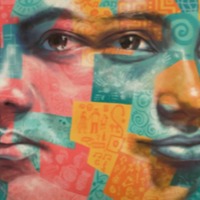
O.
There are an estimated 145,000 people living in conditions of modern slavery in Italy (GSI 2018). Italy is a destination, transit, and source country for women, children, and men subjected to sex trafficking and forced labour. Victims originate from Nigeria, Romania, Morocco, China, and other countries. Female victims are often subjected to sex trafficking in Italy after accepting promises of employment as dancers, singers, models, restaurant servers, or caregivers. Romanian and Albanian criminal groups force Eastern European women and girls into commercial sex. O.’s was forced to marry a man she did not know when she was 14-years old and move to Greece to live with her ‘husband’. She was subjected to physical abuse daily and left after 3 weeks. A neighbour promised to find her a job in Italy, where she travelled to illegally by boat. However, upon arrival she was forced into prostitution, beaten daily until she agreed to work on the streets. O. was able to leave her situation when the police caught her and took her to a centre for minors, where she stayed for a year and a half.
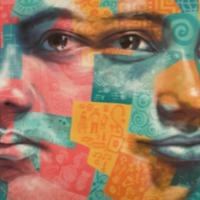
L.
There are an estimated 145,000 people living in conditions of modern slavery in Italy (GSI 2018). Italy is a destination, transit, and source country for women, children, and men subjected to sex trafficking and forced labour. Victims originate from Nigeria, Romania, Morocco, China, and other countries. Female victims are often subjected to sex trafficking in Italy after accepting promises of employment as dancers, singers, models, restaurant servers, or caregivers. Romanian and Albanian criminal groups force Eastern European women and girls into commercial sex. L fell in love with an older man who convinced her to runaway to Italy with him. After a while of staying at his friend’s house, L’s boyfriend coerced her into prostitution. She escaped one day with the help of an Albanian client who took her back home.
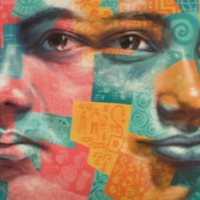
A.
There are an estimated 20,000 people living in conditions of modern slavery in Albania (GSI 2018). An estimated 10% of girls in Albania are married before their eighteenth birthday, with child marriage most common among the Roma ethnic group and in poor, isolated and rural areas. Child marriage is driven by gender inequality and while country has committed to eliminate child, early and forced marriage by 2030 in line with target 5.3 of the UN Sustainable development goals, no progress has been reported thus far. Human traffickers also exploit domestic and foreign victims in Albania, and traffickers exploit victims from Albania abroad. Traffickers exploit Albanian women and children in sex trafficking and forced labor within the country, especially during tourist season. Traffickers use false promises such as marriage or employment offers to force victims into sex trafficking. Traffickers exploit Albanian victims in sex trafficking in countries across Europe, particularly Kosovo, Greece, Italy, Belgium, Germany, Switzerland, North Macedonia, Norway, the Netherlands, and the UK. Albanian migrants who seek employment in Western Europe face forced labor and forced criminality, particularly in the UK. When she was a young girl A’s mother left her father for another man. Too poor to look after her, A’s mother sent her to live with a neighbours’ family who, while treating her well at first, began to withhold food and exploit her. She stayed there for one year before returning to live with her mother who, after spending some time begging, had been forced in to prostitution by a man who had promised to help her get a better house. A’s mother’s boyfriend began sexually abusing her, and when a friend found out, he hit the boyfriend with his car. A began working as a prostitute at the age of 13, thinking she was helping her mother who was too ill to work. One day A met a man who took her to a convent in Italy who referred her to a shelter where she was helped build a better life.
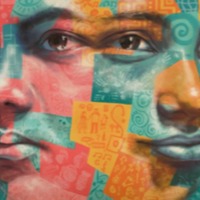
F.
There are an estimated 145,000 people living in conditions of modern slavery in Italy (GSI 2018). Italy is a destination, transit, and source country for women, children, and men subjected to sex trafficking and forced labour. Victims originate from Nigeria, Romania, Morocco, China, and other countries. Female victims are often subjected to sex trafficking in Italy after accepting promises of employment as dancers, singers, models, restaurant servers, or caregivers. Romanian and Albanian criminal groups force Eastern European women and girls into commercial sex. F had ambitions of going to university to study law. One day she was coming home from work when a car stopped in front of her. Two men jumped out and kidnapped her. She was kept for a week by the sea, sexually and physically abused, before being taken to Italy by speedboat. Upon arrival, F was forced into prostitution. She tried to escape once, being deported back to Albania by Italian police, however her trafficker found her and re-trafficked her back to Italy. F was finally able to escape after falling in love with one of her clients who helped her.
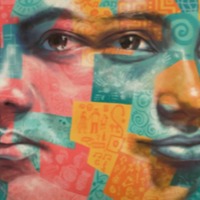
V.P.
There are an estimated 145,000 people living in conditions of modern slavery in Italy (GSI 2018). Italy is a destination, transit, and source country for women, children, and men subjected to sex trafficking and forced labour. Victims originate from Nigeria, Romania, Morocco, China, and other countries. Female victims are often subjected to sex trafficking in Italy after accepting promises of employment as dancers, singers, models, restaurant servers, or caregivers. Romanian and Albanian criminal groups force Eastern European women and girls into commercial sex. V.P. travelled to Greece for work when she was 16 years old where she was introduced to a man who promised to marry her. Instead he forced her into prostitution, forcing her to work up to 12hrs and beating her daily. After 2 years V.P. was able to escape and came back to Albania. However, unable to find work she left Albania for Italy where she was exploited as a prostitute for a second time.
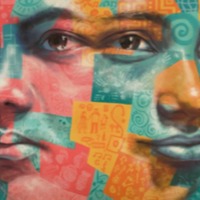
I
There are an estimated 145,000 people living in conditions of modern slavery in Italy (GSI 2018). Italy is a destination, transit, and source country for women, children, and men subjected to sex trafficking and forced labour. Victims originate from Nigeria, Romania, Morocco, China, and other countries. Female victims are often subjected to sex trafficking in Italy after accepting promises of employment as dancers, singers, models, restaurant servers, or caregivers. Romanian and Albanian criminal groups force Eastern European women and girls into commercial sex. At the age of 16, I’s parents arranged for her to marry a man twice her age, however this man was ill and was hospitalised some months later. After a while, it was arranged for I to marry another man named G., who convinced her they would have a better life in Italy. Upon arrival in Italy, I. was told she would have to work to pay for rent and forced into prostitution. I. was able to escape when her mother had denunciated their marriage and G was forced to return her to Albania and her family.
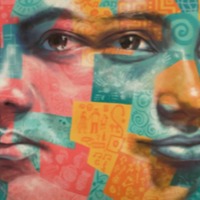
Cyntoia Brown-Long
There are an estimated 403,000 people living in modern slavery in the United States (GSI 2018). Sex trafficking exists throughout the country. Traffickers use violence, threats, lies, debt bondage and other forms of coercion to compel adults and children to engage in commercial sex acts against their will. The situations that sex trafficking victims face vary, many victims become romantically involved with someone who then forces them into prostitution. Others are lured with false promises of a job, and some are forced to sell sex by members of their own families. Victims of sex trafficking include both foreign nationals and US citizens, with women making up the majority of those trafficked for the purposes of commercial sexual exploitation. In 2015, the most reported venues/industries for sex trafficking included commercial-front brothels, hotel/motel-based trafficking, online advertisements with unknown locations, residential brothels, and street-based sex trafficking. Cyntoia Brown Long was 16 years old when she was sentenced to life in prison for the murder of a man who had bought her for sex. Cyntoia had run away from home and met a 24-year-old man who went by the name ‘Kut Throat’. She thought he was her boyfriend and was living with him in motels around Nashville, doing cocaine every day. However, ‘Kut Throat’ trafficked Cyntoia into forced prostitution. If she did not come back with cash, he would beat and rape her. One night in August 2004, Cyntoia was picked up at a fast-food restaurant by a man who agreed to pay her $150 for sex. After arriving at his house, he began showing her his gun collection, making her fear for her life. She later shot him in self-defence. Here she talks about learning that she had been trafficked and being granted clemency.
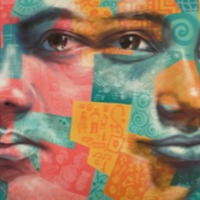
Brooke Axtell
There are an estimated 403,000 people living in modern slavery in the United States (GSI 2018). Sex trafficking exists throughout the country. Traffickers use violence, threats, lies, debt bondage and other forms of coercion to compel adults and children to engage in commercial sex acts against their will. The situations that sex trafficking victims face vary, many victims become romantically involved with someone who then forces them into prostitution. Others are lured with false promises of a job, and some are forced to sell sex by members of their own families. Victims of sex trafficking include both foreign nationals and US citizens, with women making up the majority of those trafficked for the purposes of commercial sexual exploitation. In 2015, the most reported venues/industries for sex trafficking included commercial-front brothels, hotel/motel-based trafficking, online advertisements with unknown locations, residential brothels, and street-based sex trafficking. Brooke Axtell was seven years old when she was trafficked for sex by her nanny. Her mother was in hospital and her father travelled for work. She was taken to houses and hotels and sold to strange men. She was forced into pornography with adults and other children. The trafficking finally ended when her mum came out of hospital and fired the nanny, but Brooke’s trauma followed her into adulthood.
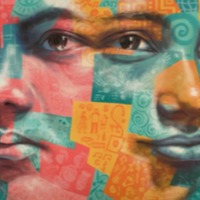
Tina B
There are an estimated 403,000 people living in modern slavery in the United States (GSI 2018). Sex trafficking exists throughout the country. Traffickers use violence, threats, lies, debt bondage and other forms of coercion to compel adults and children to engage in commercial sex acts against their will. The situations that sex trafficking victims face vary, many victims become romantically involved with someone who then forces them into prostitution. Others are lured with false promises of a job, and some are forced to sell sex by members of their own families. Victims of sex trafficking include both foreign nationals and US citizens, with women making up the majority of those trafficked for the purposes of commercial sexual exploitation. In 2015, the most reported venues/industries for sex trafficking included commercial-front brothels, hotel/motel-based trafficking, online advertisements with unknown locations, residential brothels, and street-based sex trafficking. Tina B left home with the man she thought was her boyfriend at 14 years old. He trafficked her into commercial sexual exploitation. Tina B was raped daily. She went to the police for help, but instead they arrested her and placed her into juvenile detention for prostitution.
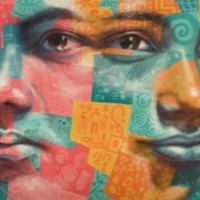
Hiral
The Global Slavery Index 2018 estimates that on any given day there were nearly 8 million people living in modern slavery in India. The GSI 2018 reports an emerging trend in northeast India where organised trafficking syndicates operate along the open and unmanned international borders, duping or coercing young girls seeking employment outside their local area in to forced sexual exploitation. Many women and girls are lured with the promise of a good job but then forced in to sex work, with a 'conditioning' period involving violence, threats, debt bondage and rape. Hiral’s* (The Survivor) life changed when her father died and debt collectors demanded her family pay off their debts or be driven from their home. To help support her family Hiral took a job looking after the children of a wealthy family hundreds of miles away. However, upon arrival, she was forced into prostitution. Hiral recalls the night the bar she was forced to work in was raided by the police and her trafficker was arrested.
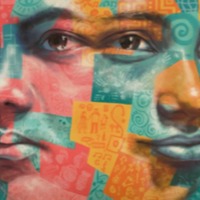
Joanna
There are an estimated 403,000 people living in modern slavery in the United States (GSI 2018). Sex trafficking exists throughout the country. Traffickers use violence, threats, lies, debt bondage and other forms of coercion to compel adults and children to engage in commercial sex acts against their will. The situations that sex trafficking victims face vary, many victims become romantically involved with someone who then forces them into prostitution. Others are lured with false promises of a job, and some are forced to sell sex by members of their own families. Victims of sex trafficking include both foreign nationals and US citizens, with women making up the majority of those trafficked for the purposes of commercial sexual exploitation. In 2015, the most reported venues/industries for sex trafficking included commercial-front brothels, hotel/motel-based trafficking, online advertisements with unknown locations, residential brothels, and street-based sex trafficking. Joanna was born in a small town in Europe/ When she was 18 she met a man who said he wanted to marry her. They began seeing each other and Joanna became pregnant. Her boyfriend took Joanna to the United States where their child was born. Unable to read, Joanna was told to sign a piece of paper at the hospital and never saw her child again. She was taken to an apartment building where other young girls like her were being kept. Joanna was forced to provide sexual services, raped multiple times a day. She was finally able to escape one day when she became ill.
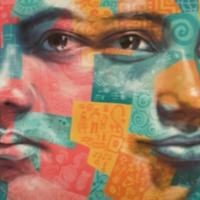
Afaafa
There are an estimated 328,000 people living in conditions of slavery in Kenya (GSI 2018). Men, women and children are subjected to exploitation amounting to modern slavery in forced labour and sex trafficking. Children are often subjected to forced labour in domestic service, agriculture, fishing, cattle herding, street vending and begging. They are also victims of commercial sexual exploitation throughout the country, in khat cultivation areas, near gold mines and along the highway and Lake Victoria. Moreover, those residing in Kenya's largest refugee camp Dadaab are often vulnerable. Men and women are often lured by employment agencies offering attractive job opportunities, then find themselves trapped in domestic servitude, massage parlors and brothels or forced manual labour. Afaafa was promised a modelling job outside Nairobi, however upon arrival was locked in a hotel room and forced into prostitution. Afaafa was subjected to sexual exploitation for over a month before she got hold of a phone and was able to call the police and escape.
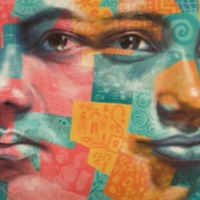
Jamie
There are an estimated 403,000 people living in modern slavery in the United States (GSI 2018). Sex trafficking exists throughout the country. Traffickers use violence, threats, lies, debt bondage and other forms of coercion to compel adults and children to engage in commercial sex acts against their will. The situations that sex trafficking victims face vary, many victims become romantically involved with someone who then forces them into prostitution. Others are lured with false promises of a job, and some are forced to sell sex by members of their own families. Victims of sex trafficking include both foreign nationals and US citizens, with women making up the majority of those trafficked for the purposes of commercial sexual exploitation. In 2015, the most reported venues/industries for sex trafficking included commercial-front brothels, hotel/motel-based trafficking, online advertisements with unknown locations, residential brothels, and street-based sex trafficking. Jamie was kidnapped from her home by three men and forced into commercial sexual exploitation. She was subjected to rape and sexual violence every day
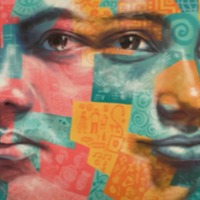
Ram
There are an estimated 610,000 people living in conditions of modern slavery in Thailand (GSI 2018). The country is a source, destination and transit country for men, women and children subjected to forced labour and sex trafficking. Thailand’s commercial sex indusrty remains vast, increasing vulnerabilities for sex trafficking. Children are victims of sex trafficking in brothels, massage parlours, bars, karaoke lounges, hotels and private residences. People are trafficked from other Southeast Asian countries, Sri Lanka, Russia, Uzbekistan and some African countries. It is also a transit country for people from China, North Korea, Bangladesh, India and Burma. Ram ran away from an abusive home and was forced to live on the streets. One day while stealing food from a local market, Ram was kidnapped by a street gang. Ram was forced to steal from tourists during the day and at night was sold for sex to older men. Ram’s exploitation finally came to an end when his trafficker was arrested.
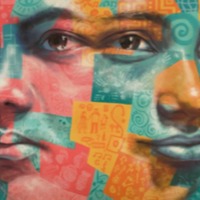
Ratree
There are an estimated 610,000 people living in conditions of modern slavery in Thailand (GSI 2018). The country is a source, destination and transit country for men, women and children subjected to forced labour and sex trafficking. Thailand’s commercial sex indusrty remains vast, increasing vulnerabilities for sex trafficking. Children are victims of sex trafficking in brothels, massage parlours, bars, karaoke lounges, hotels and private residences. People are trafficked from other Southeast Asian countries, Sri Lanka, Russia, Uzbekistan and some African countries. It is also a transit country for people from China, North Korea, Bangladesh, India and Burma. Ratree left her home village in Thailand at the age of 13 to look for work. She found a job working for a woman in a hotel, however the work turned out to be not how she had imagined. Ratree was forced to have sex with older men, subjected to sexual violence and rape daily. Ratree’s exploitation was finally ended when undercover police performed a raid on the hotel.
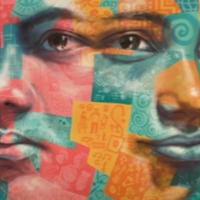
Romina
Countries in Latin America are source, transit and destination countries for trafficking in persons. People are exploited within their own countries and trafficked to other countries in the region, with Latin America being the primary source region for people trafficked to the United States. Major forms of trafficking in persons include commercial sexual exploitation of women and children, labour trafficking within national borders and among countries in the region, and the trafficking of illegal immigrants in Mexico and Central America. The two countries in Latin America and the Caribbean with the largest percentages of their population subjected to modern slavery, are Haiti and the Dominican Republic, according to the Walk Free Foundation. Romina was living on the streets with her father from the age of 9. One day her father was killed and Romina was put into the care of his friend Hugo. From the age of 13, Hugo trafficked Romina into commercial sexual exploitation. Romina was drugged and subjected to daily sexual violence until one day she was rescued during a police raid.